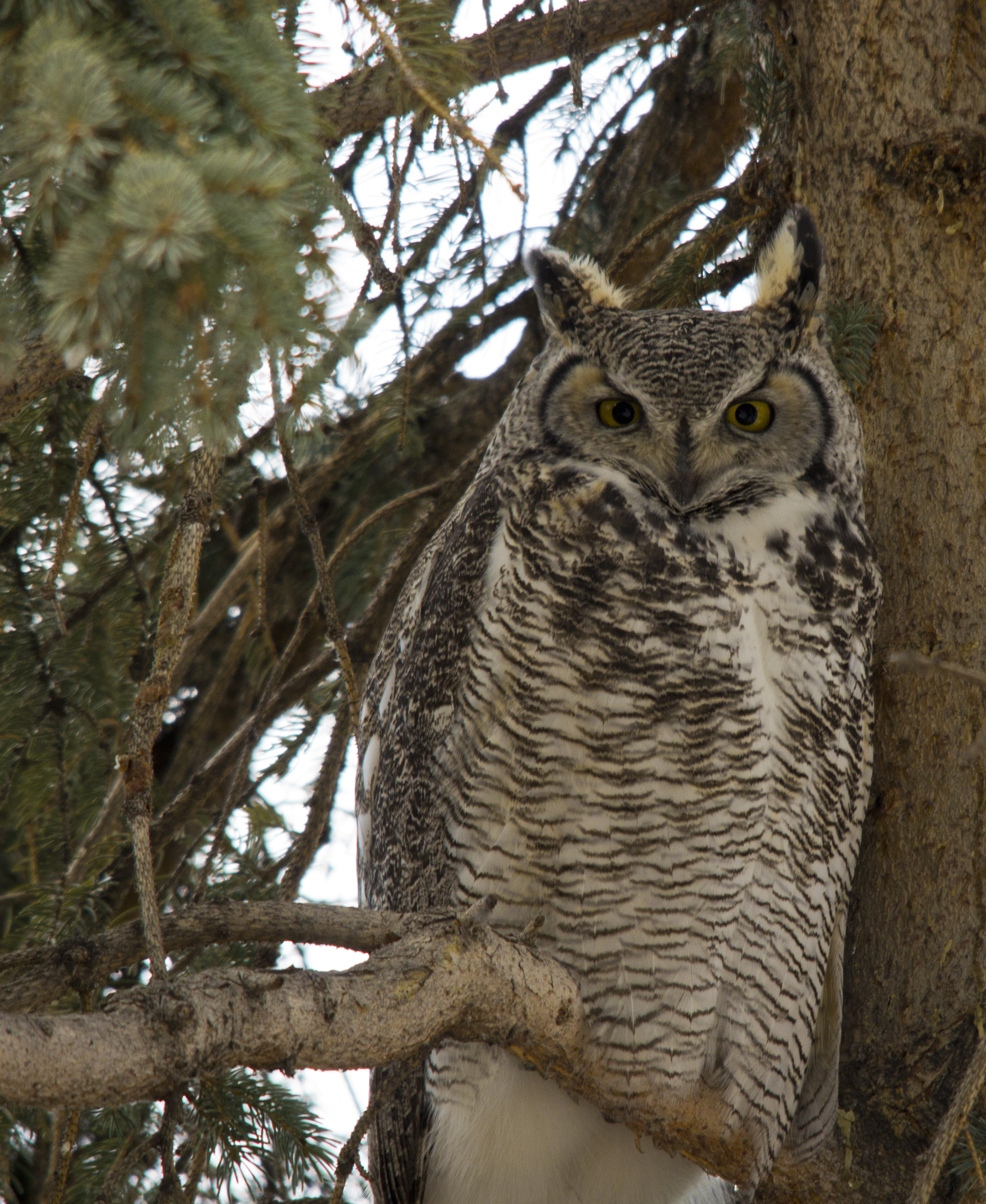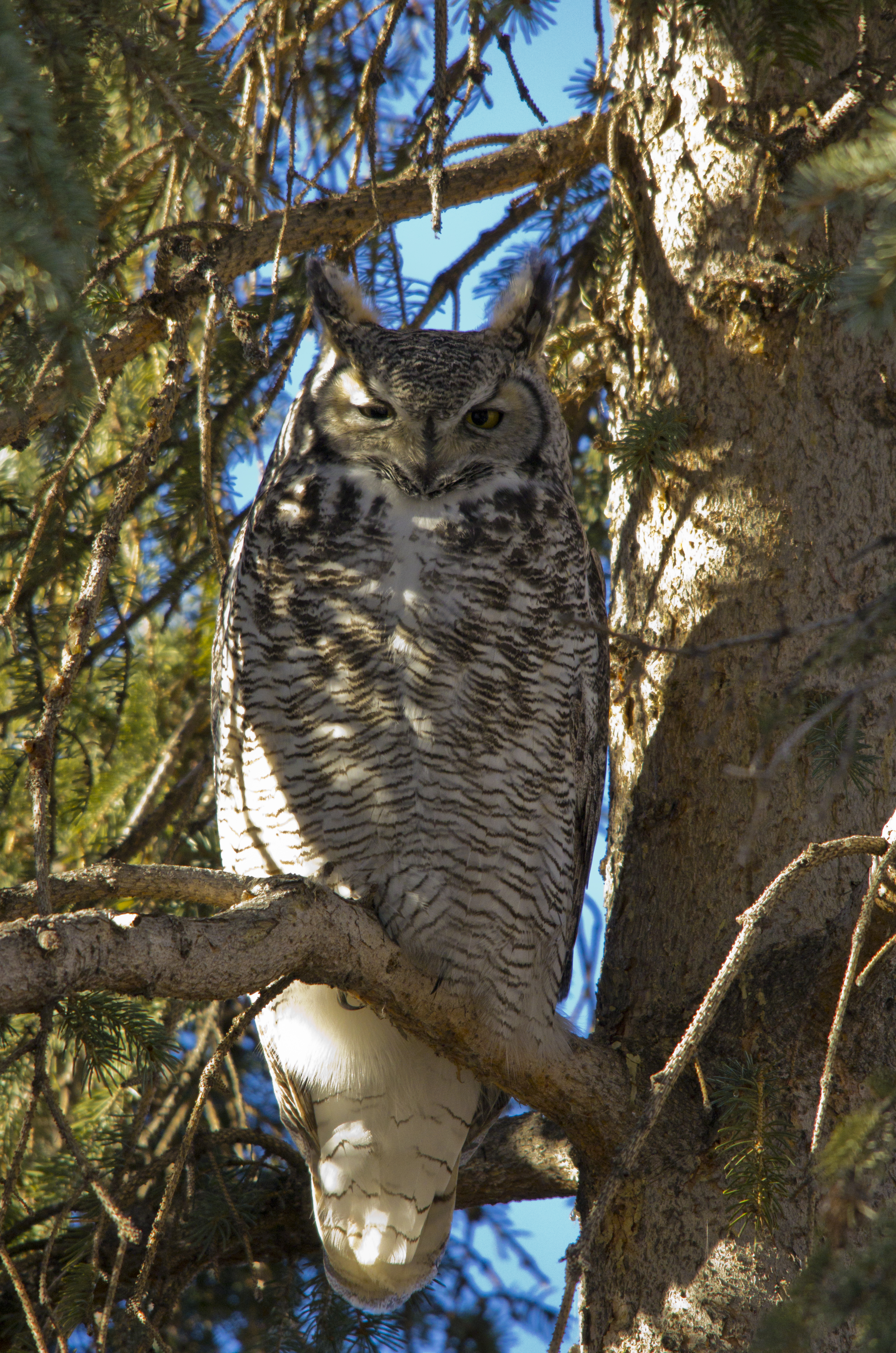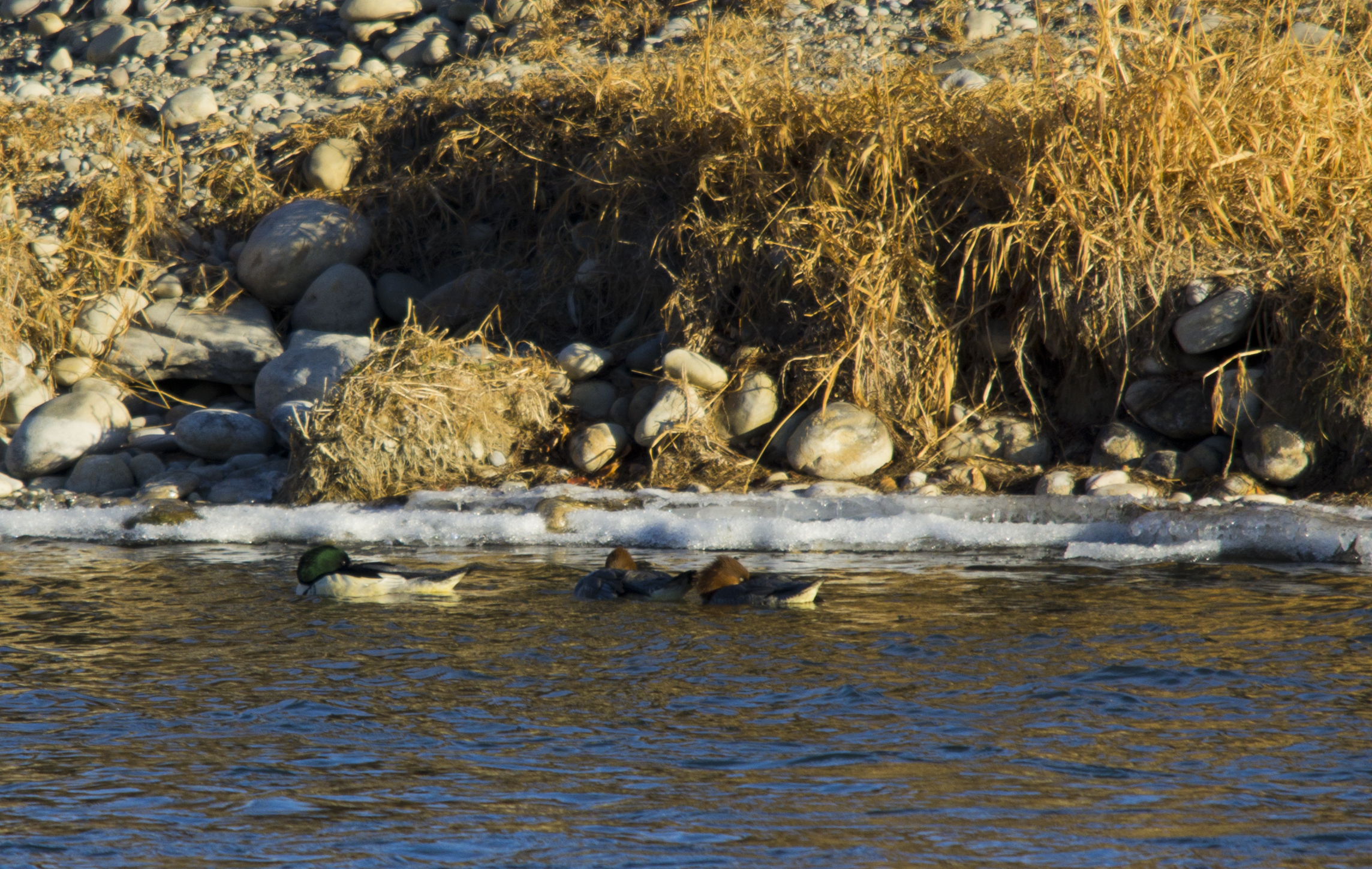I continue to be amazed at the diversity of birds in Calgary that for one reason or another choose to overwinter here. When I signed up for the Autumn birding course with Fish Creek Provincial Park, led by the legendary Gus Yaki, I was expecting to learn a lot about the bird population of Calgary, but also expected that once the temperatures dropped and the usual summer birds migrated southward, that the walks would turn to more of a discussion and less spotting and identification of birds themselves. So far, I have been thankfully disappointed. Thirteen weeks into the course, I am still spotting new birds and exploring new locations for birding within the city limits.
This past weekend I spent Saturday morning in LaFarge Park and Sikome Lake, as well as a brief stop at the visitor’s centre before heading home. The first highlight of the day was one of the Great Horned Owls that have been roosting near the buildings at Sikome Lake for the past few years.
Moving on down we stopped to check out a local feeding spot that walkers, joggers and nature lovers keep well stocked year-round for the White-breasted Nuthatches, Black-capped Chickadees, and Downy Woodpeckers nearby.
Picking back up down the road at the boat-launch parking lot, we walked along the Bow River for the next couple of hours, spotting a number of species. Common Goldeneyes, Buffleheads, Common Mergansers, Mallards, Killdeer, and even a pair of Green-winged Teal were taking advantage of the warm weather to feed.
The highlight for me was the family of Bald Eagles that had taken up residence just south of Highway 22X. They were very tolerant of our intrusion into their park, and even posed quite nicely for us.
A little further south , we were alerted to a flock of Common Redpoll in feeding from a stand of water birch, which allowed us to get very close before being flushed by something nearby, which would soon make its presence known.
Just before reaching the southernmost point of our journey, we spotted a lone Killdeer walking across a gravel bar in the centre of the river, and it was moments later that the culprit who flushed the Common Redpolls appeared just over the opposite bank of the Bow River; this juvenile Northern Harrier.
Wheeling northward once again along the pathway we passed by the two juvenile Bald Eagles, who again seemed undisturbed by our proximity, and then onward to the vehicles. Only one more brave bird would present itself so beautifully at this far southern extent of the walk. A female Hairy Woodpecker industriously worked away at a fallen log, poking not one, but two separate holes through the bark and both times coming up with a tasty morsel.
In our walk around the visitors centre a little later on, we were once again gifted with a Red-breasted Nuthatch along with a number of Black-capped Chickadees along the pathway, and a Northern Shrike being chased by a Black-billed Magpie as we returned to the parking lot. Sadly I wasn’t quite fast enough with the camera to catch that pair.
Posted by Daniel Arndt















































